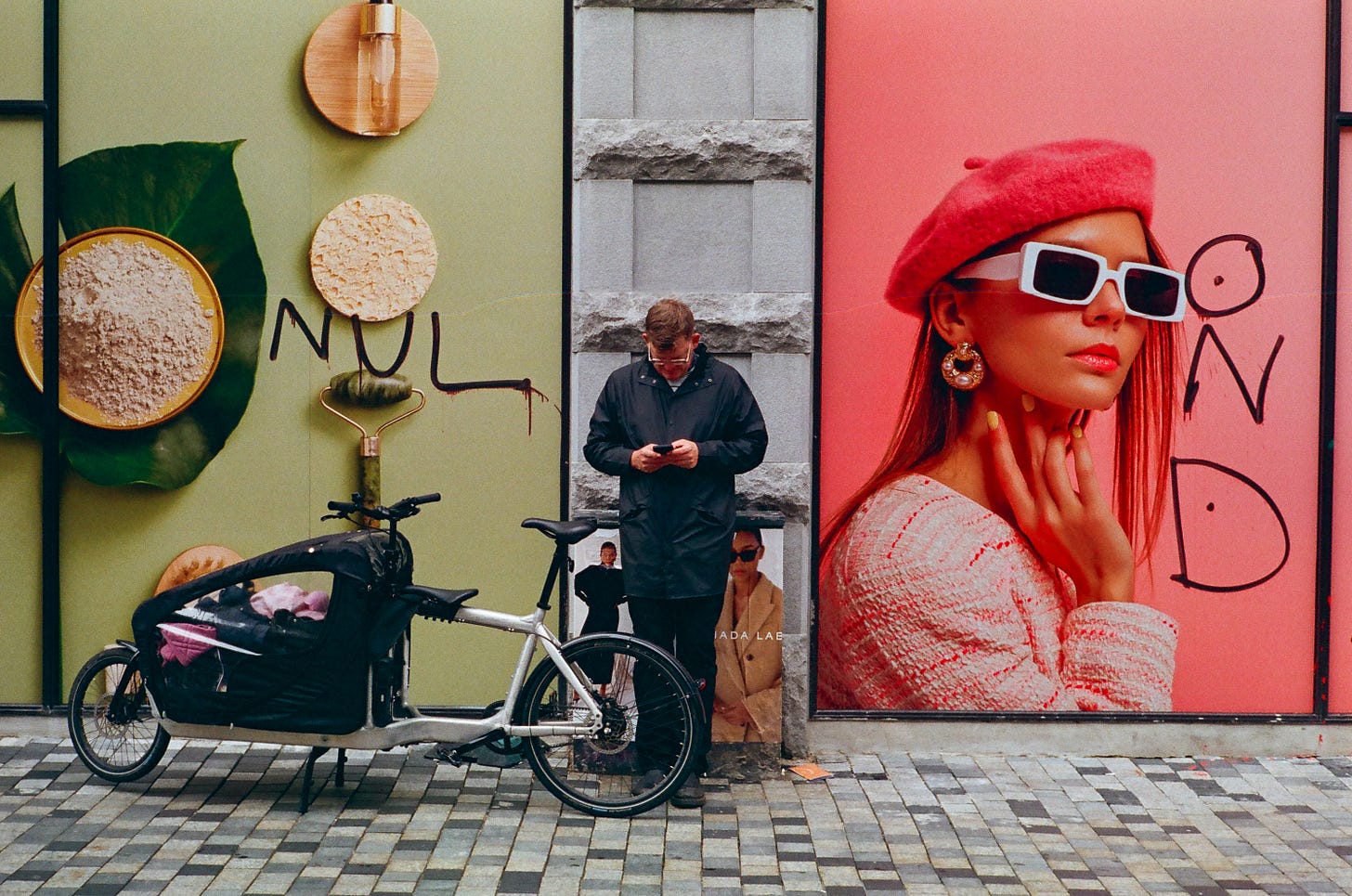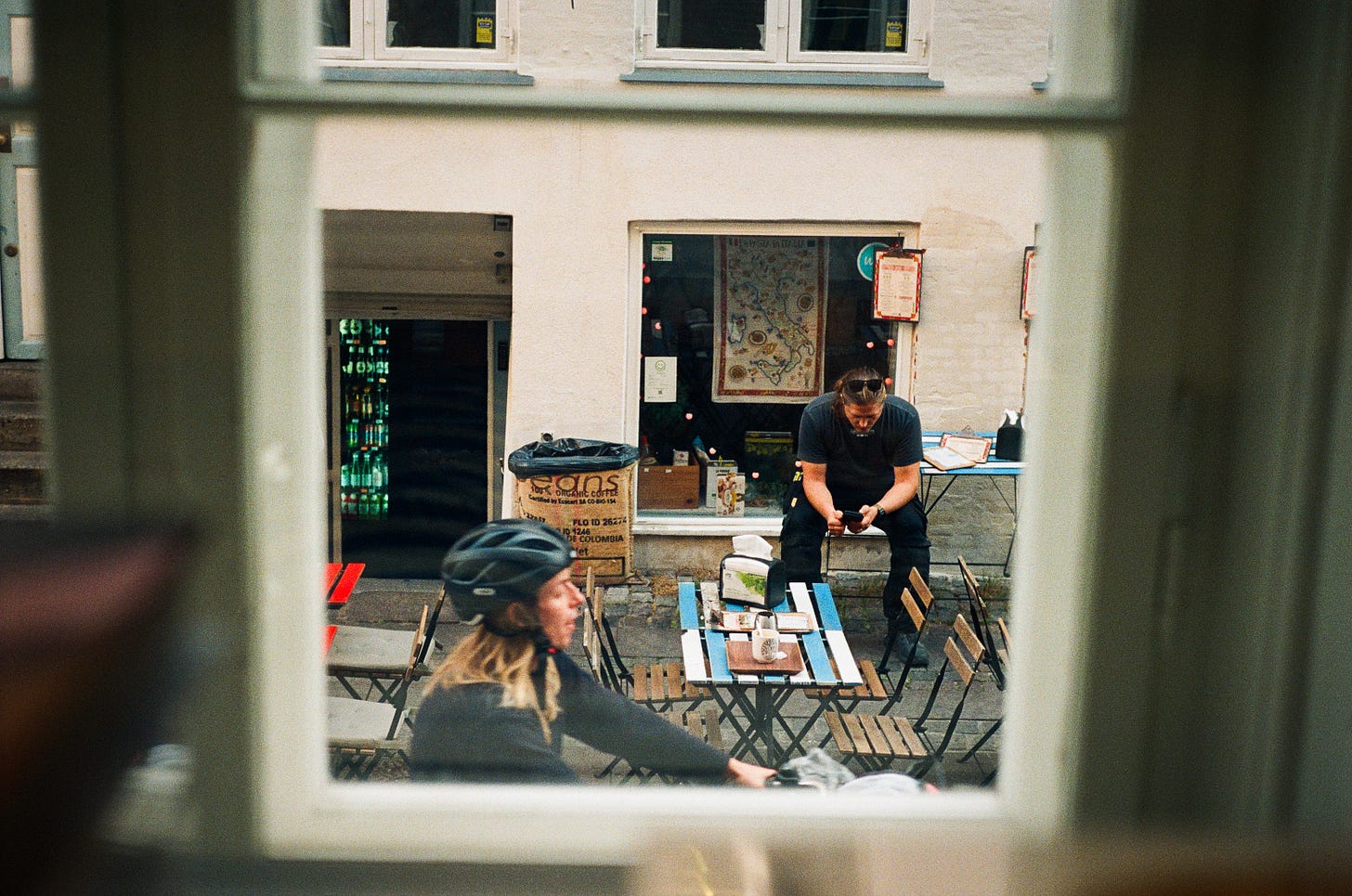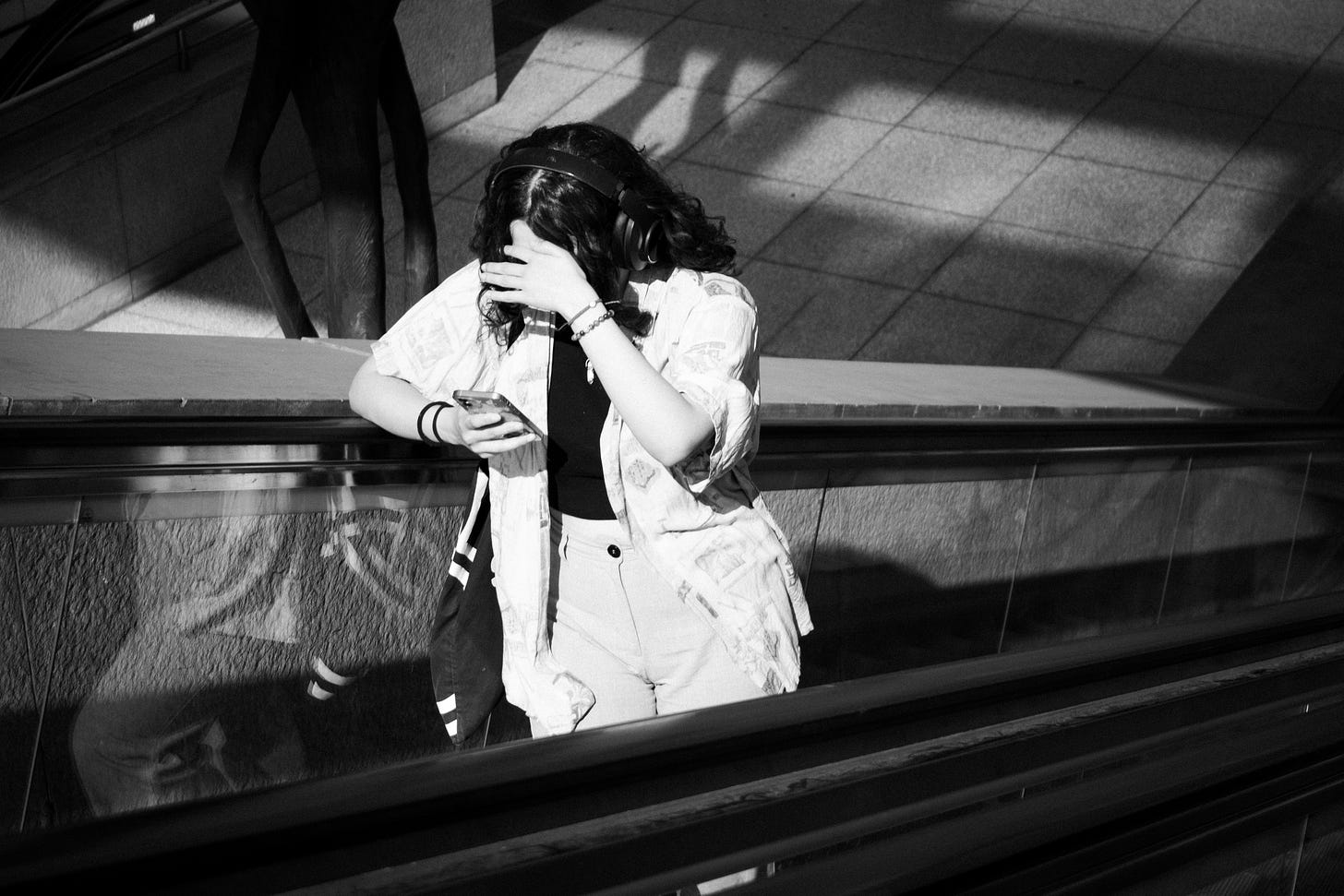Being intentional in the age of scroll
Finding my way back to a purposeful mindset without falling down the content well
Over the last ten years, and especially the last five, it has felt to me like the internet and the online world are shrinking. What once felt like an endless landscape of blogs, specialty interest sites and online communities has become a pretty short list of large tech properties. So unless I snail-mailed you a printout of this post, you will know exactly which properties I mean.
No, the internet is not actually shrinking, but it is changing. The feeling I mentioned is actually representative of a real phenomenon: a consolidation of content within the protected, competitive gardens we know as social media platforms.1
Inside each of these properties are ecosystems of users — creators and consumers — joined together by mechanisms to facilitate their connection. They are places where the things we create and upload are being fed onward to others; if you are a content consumer, then you receive these things in your feed. That is sensible because that’s why we all turned up in the first place — to share with one another.
There’s a problem with social media, though, and it becomes more evident when we think about the effects of consolidating humanity’s digital creations into silos. There exists a reward framework for the stakeholders in any platform that drives decisions about how you interact with it.
When I say stakeholders, I am not talking about shareholders or investors. I mean the entire hierarchy of workers behind the corporate veil who are looking to maximise certain metrics as a definition of their success. There is a veritable army of them back there looking to make the world a better place, to reach their career goals, and yeah, keep their health insurance. That’s a lot of people and some good motivation to see this through — and they have.
The success metric I’m referring to is engagement. That army I mentioned? Their product decisions are made to support boosting this number across the board. Experiments are run on users2. Decisions are made. These become a manufactured part of the software, the platform and our end-user experience. Even a small increase means millions more eyeballs are captive while advertisers pay for the privilege to get right in front of them.
New “content” is constantly prioritised and fed to hapless scrollers while their behaviours are systematically scrutinised for engagement. An “algorithm” continuously assesses and improves the reach of engaged content and the metrics are continually served — our phones stay on and this or that app gains yet another hour of screen time.
The designers of these platforms have a financial incentive to get us addicted.
Did they succeed?
Screen time
Last year, I increasingly noticed how often I went through the loop of “waiting for something to happen”. I would sit some place or at home and find myself idle. Immediately, I would reach for my phone, unlock it, open socials and “check” what is happening (nothing) and lock my phone again. A few seconds later, the idle feeling would hit again, and I’d repeat this action.
I got into many conversations with myself and others about how we are using our time. Are we being intentional enough? Or, are we just being led through our days by outside forces; haplessly phoning in our entire existence?
I think in many cases, it is the latter.
This isn’t a judgment zone. I’ll be the first to admit to poor stewardship of my time in front of a screen. Sometimes when I was doing the above “checking”, the attention hook would catch in me, and I’d just start scrolling. I don’t really concretely know what it is that I was hoping would appear. I guess it’s something that is funny, pleasing, triggering, or otherwise provides some type of dopamine hit as a result of its discovery. But, if I can use an hour in an instant by digging deeper and deeper down an endless feed without ever finding what I am looking for, I start to feel like I have been tricked.
I stopped to reflect on how unintentional my usage had been. I couldn’t then explain to myself how things had gotten that bad. I was signing on to share my work, but I was getting hooked looking at things and didn’t understand why I was seeing them.
Nowhere to go
All of this taken together, we have a nasty little compound problem. We now turn up to visit a smaller more delineated internet where community and its relevant information is more difficult to find. Within the walls of social platforms, our time is largely not respected. Meanwhile hostile product creators continue to build experiences intended for user exploitation rather than for the creation of utility or joy.
Throw in the veritable rightward shift in political posture by the leadership of these platforms, we’d have more than enough reason to take a step back and consider doing something differently. The desire to flee sets in. How do we escape this? Where do we turn? Everywhere we look, we start to see the same patterns emerging. The same questions about audiences and discoverability arise but these will only serve to remind us that the trap is already laid.
It begins to feel like there might be nowhere to go.
So what if we just… went offline?
Finding my way back
Somewhere along the line, I got fed up.
I felt that I used a lot of time on social, but I was finding less I could show for it. In previous years, I had many good successes connecting with other photographers and artists, finding community and even making some friends. I would never trade away those things. They are the best reason that any one of us should ever put a foot in the door. I see all of you.
Yet at some point unknown, the work of growing and maintaining presence began to net many fewer rewards. Instead of discovering interesting people, I saw what felt like double the number of ads. Instead of finding brilliant photography and art, I found larger amounts of low quality videos with overlaid text and trending audio. My screen time still somehow increased.
As many benefits began to fall away, I began to question how this fit with my goals. I reasoned to myself that if my purpose in this world is to create things; whether it is a photo, a print or an essay, then the production of that work must take priority. Time spent scrolling in someone else’s world won’t fire my camera shutter, and it certainly won’t write a single paragraph of text. These things are my responsibility. It feels like an obvious statement, but it is also so easy for one to get lost in the light touches of “likes and follows”. It can almost feel like doing work. Hell, it’s a full time job description at most companies.
I’ll stop you now before you begin to believe that I think I solved this. I am just at some intermediate stop on a long journey of discovery. I go at it day-by-day so I can’t presume to speak to what will work for you. This is personal. I am sharing, though, in the hopes that what I have gained can inspire you to find your own way back to a place you might be missing.
So what did I do?
I decided to build a strategy around improving my relationship to the smartphone and cementing better habits for everyday life. I implemented the following with a view to better time management and fulfilling a purpose as someone who creates.
In no specific order and of varying specificity:
No messages/DMs of any kind vibrate the phone
= Staying present in others’ company.
= Staying focused on my tasks at hand.Notifications from social media are disabled except for DMs
= No more opening apps to inspect likes or comments.Badge counts on social media app icons are disabled
= No more false sense of urgency.No smartwatch
= I don’t need to be told in two places.Photos for posting are batch selected and exported. All posts are scheduled a week at a time in one go
= No need to sign on to take any action during the week.No games on the smartphone
= Bring a book.Carry a small notebook
= Making notes on the phone means my eyes are still on the phone.Start offline/analog
= The first draft of this post was written on a writing pad.… I started to realise there are more, and that this list might warrant its own post? If that’s a thing for you, the comment box is below. :)
These have all been a great start for me. At the very least, I feel less susceptible to the pitfalls of endless scrolling. In the best case, I am actually more creative and productive in my artistic life. I do know for a fact that being more offline has influenced my creative thoughts significantly. I have previously written about the value that printing images has taken on for me. That evolution in my process came directly from the frustration that my images were trapped inside my phone when my phone was not a place I wanted to be.
It was and is up to me to overcome the disrespect of my time and deal with these platforms on my own terms. I have a lot I wish to do and accomplish, but I can’t do it when my attention is enslaved elsewhere. So I am choosing to live in the world we can touch.
Life happens outside of this glass rectangle. I managed to remember that. ∎
Most photos in this post are taken from my 2023 B&W photography series called “Object of Worship” which focused on humans using smartphones in Times Square. The colour photographs in this post are thematically related to this series but were not originally included.
Here are some resources on the phenomenon of internet consolidation. Current research is limited, but continuing it is understood to be necessary:
https://www.pewresearch.org/data-labs/2024/05/17/when-online-content-disappears/
https://www.ietf.org/blog/consolidation/
https://www.mccormick.northwestern.edu/computer-science/news-events/news/articles/2023/analyzing-internet-consolidation-trends.html
https://www.ietf.org/archive/id/draft-mcfadden-cnsldtn-effects-03.html
User experimentation drives product decision-making (typically without consent).
https://www.yu.edu/katz-school/2023/02/10/book-reveals-social-medias-methods-for-experimenting-on-users
https://link.springer.com/article/10.1007/s11023-023-09644-y
https://www.optimizely.com/products/feature-experimentation/
https://statsig.com/experimentation








